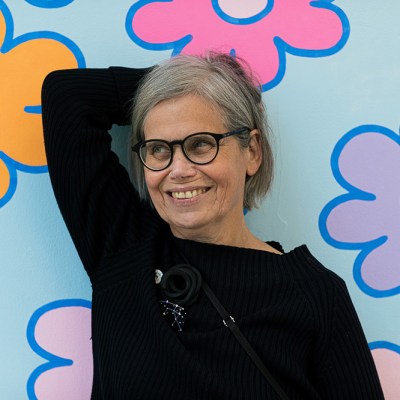The New York-based artist Teresita Fernández is best known for her large-scale installations which take inspiration from the landscape and natural phenomena as well as diverse historical and critical references. Through her work, she challenges traditional ways of representing and thinking about place by unravelling narratives around colonialism, power and ecological destruction. Her latest exhibition at Lehmann Maupin in London, titled ‘Caribbean Cosmos’, features a new series of sculptures and installations that draw on imagery of catastrophic weather and natural disasters as metaphors for centuries of injustice on the Caribbean archipelago, the first point of colonial contact in the Americas.
Where is your studio?
My studio is located in Boerum Hill, Brooklyn, right near the Gowanus Canal, a historically industrial area.
What do you like most about the space?
I really value the quiet part of my practice. Research in this private space is such a necessary contrast to all the public aspects of the art world and being an artist.
What frustrates you about it?
Nothing. My old studio was a dilapidated warehouse I worked in for 20 years, on the same site as my current studio. I rebuilt the entire building to fit my needs so I now have amazing light and a space I truly feel comfortable in.
Do you work alone?
I work alone in the very early hours of the morning and after 5PM. During the day, I usually have my trusted studio manager and four to five assistants helping me with administrative work, preparing surfaces, cutting and laminating charcoal, etc.
Kalunga (Maria/Marea) (2022), Teresita Fernández. Photo: Daniel Kukla; courtesy the artist and Lehmann Maupin, New York, Hong Kong, Seoul, and London.

How messy is your studio?
My downstairs space is a dirty, messy place of making where anything goes; my upstairs space is impeccable and has an office, works on paper, a library and my private drawing/thinking space.
What does it smell like?
Downstairs smells like charcoal, the material I’ve been using lately – it’s a warm, comforting scent. Upstairs smells like burnt sage.
What’s the weirdest object in there?
An intact, spiny spondylus shell still attached to its coral matrix.
Which artistic tool could you least do without?
Bamboo skewers to mix and apply substances, and I also use the pointy end to move tiny pieces of materials as I work.
What’s the most well-thumbed book in your studio?
Too many to name! My dear friend, the great scholar Miriam Jiménez Román gifted me many books from her library on Afro-Caribbean/Afro-Cuban history in the months before she passed away, and it occupies a place of importance on my bookshelf.
Do you cook in the studio?
Never.
What do you listen to while you’re working?
Usually nothing, I like to hear my own thoughts and value silence. When I’m doing repetitive work, I’ll catch up on podcasts and lectures. And there’s a neo-gothic church from the 1800s right behind my studio so the bell tower plays on the hour.
Kalunga (Maria/Marea) (2022), Teresita Fernández. Photo: Daniel Kukla; courtesy the artist and Lehmann Maupin, New York, Hong Kong, Seoul, and London.

Do you have a studio routine?
My studio day starts with a very specific matcha tea from Kyoto, usually very early, followed by alone time just reflecting on what I did the day before. Besides those constants, every day is different.
What do you usually wear while you’re working?
Some combination of black work pants, a black work T-shirt, and black work sneakers.
Who is the most interesting visitor you’ve ever had to the studio?
I’d change the word interesting here to engaged and engaging. My studio visits and ongoing conversations with Cecilia Vicuña are always really nourishing and expansive.
Is anything (or anyone) banned?
I don’t allow photography of any works in progress, and I try to be extremely selective about visitors.
‘Teresita Fernández: Caribbean Cosmos’ is at Lehmann Maupin, London, from 14 September–5 November.



